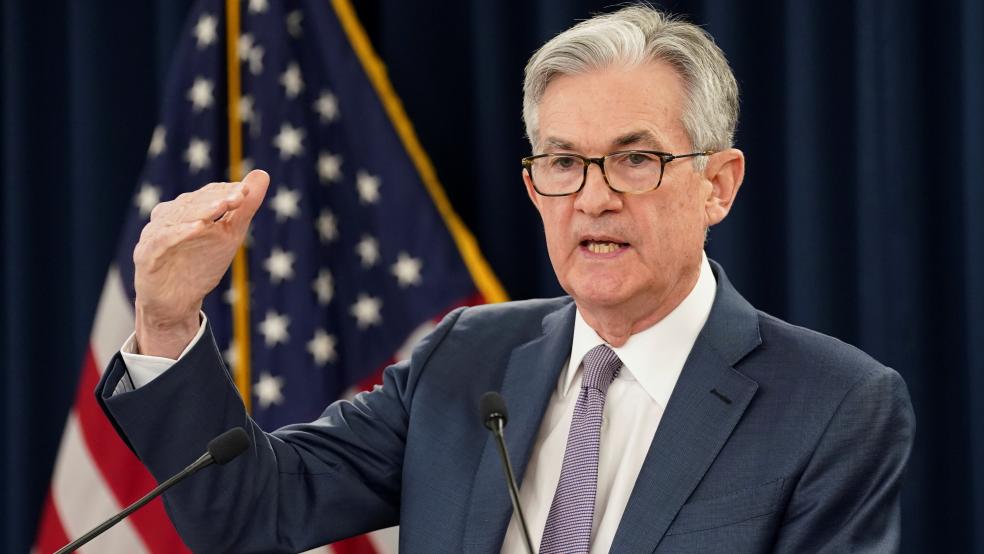The Federal Reserve announced Thursday it would take unprecedented emergency steps to pump as much as $2.3 trillion into an economy and job market that Fed Chair Jerome Powell described as deteriorating “with alarming speed.”
The sweeping new loan programs unveiled by the Fed will draw on the money provided by Congress in its coronavirus relief package to provide additional support for small and medium-size businesses as well as to states and cities facing budget crunches as a result of the pandemic and economic shutdown.
The Fed, backed by Treasury Department funds authorized by Congress, is also expanding its emergency response into riskier new areas it has previously avoided, including municipal debt and some lower-rated corporate debt. The change will allow firms that until recently had been rated as investment grade to access the central bank’s loan facilities.
Under the new programs, the Fed will offer through banks up to $600 billion in four-year loans to businesses with up to 10,000 employees or revenues of less than $2.5 billion. These loans can be larger than those offered by the Small Business Administration.
The Fed will also buy up to $500 billion in short-term bonds from all 50 states as well as counties with at least 2 million residents and cities with more than a million people. “The Fed’s actions are intended to rejuvenate the $3.8 trillion market for municipal bonds and lower the rates state and local governments pay. That should help government agencies avoid more layoffs,” Martin Crutsinger of the Associated Press writes.
Help for ‘fallen angels’: “The reason the Fed had to expand the pool of credit that they are willing to buy is that so many borrowers are slipping into these lower-rated categories,” Mark Vitner, senior economist at Wells Fargo Securities, told Bloomberg News. “This is aimed more at fallen angels rather [than] dastardly devils.”
Nevertheless, Bloomberg notes that the latest Fed action “thrusts the institution into the sort of speculative lending activities it had shunned in the past -- underscoring the risks that Chairman Jerome Powell is willing to take to shore up the economy.”
Powell reportedly indicated Thursday he “won’t hesitate” to move into other areas or adjust the loan programs as needed. “We are deploying these lending powers to an unprecedented extent, enabled in large part by the financial backing from Congress and the Treasury,” he said in a speech following the Fed’s announcement. “We will continue to use these powers forcefully, proactively, and aggressively until we are confident that we are solidly on the road to recovery.”
Powell added that the Fed is using “lending powers, not spending powers” and that “there will also be entities of various kinds that need direct fiscal support rather than a loan they would struggle to repay.” The Fed, for example, is offering up to $500 billion in loans to states and municipalities, but its new program will not close state budget gaps, according to analysts at Goldman Sachs, who continue to expect that Congress will provide another $100 billion to $200 billion in direct fiscal aid to those governments.
The Fed had already dropped interest rates to zero and launched massive bond-buying programs to keep borrowing costs low and ensure that credit keeps flowing during the coronavirus crisis. The new and expanded programs were unveiled just as the Labor Department announced that 6.6 million Americans filed for first-time jobless claims last week, lifting the total number of job losses to 16.8 million over the past three weeks (see more on this below).
The bottom line: The Fed is going far beyond what it did during the financial crisis and Great Recession, buying a wider range of debt and doing so more aggressively. “The Fed had previously rolled out about $500 billion worth of emergency lending programs, so this could more than quadruple the size of those programs,” Jeanna Smialek of The New York Times writes. And Michael Gapen, chief U.S. economist at Barclays Capital in New York, told Bloomberg: “The Fed has now done virtually everything we think it should be doing and we think it can do.”





